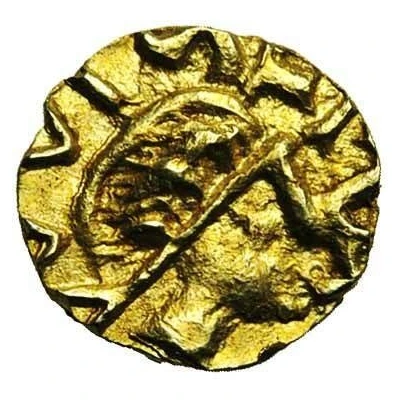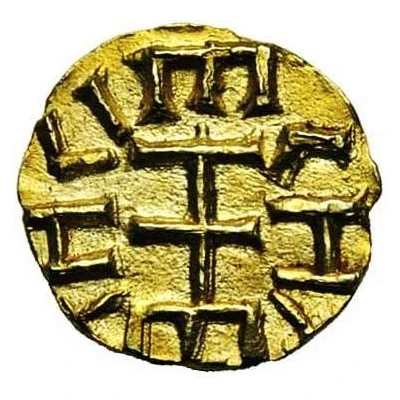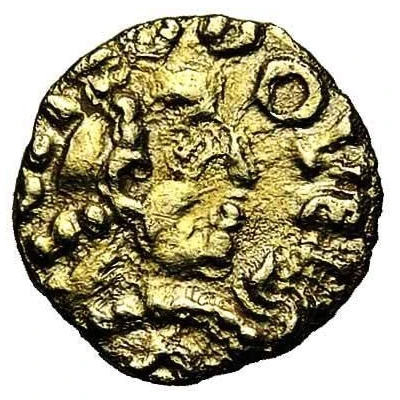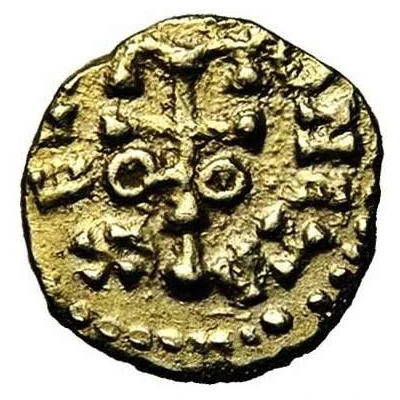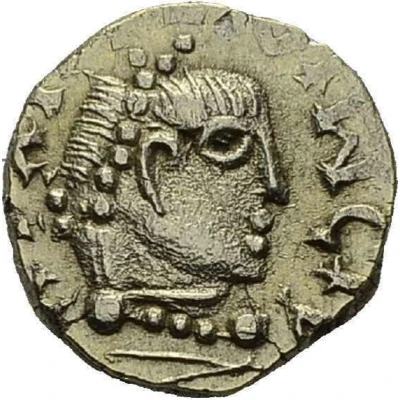
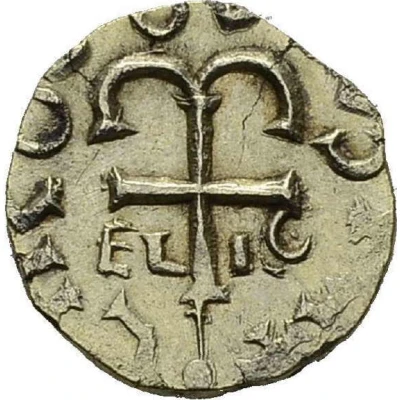

© Chaponnière et Firmenich SA
Tremissis - Moneyer Eligius - Clovis II Paris
| Electrum | 1.19 g | - |
| Location | Kingdom of Neustria (Frankish Kingdoms) |
|---|---|
| Moneyer | Eligius |
| King | Clovis II (639-657) |
| Type | Standard circulation coin |
| Years | 639-641 |
| Value | 1 Tremissis (⅓) |
| Currency | Tremissis (476-670) |
| Composition | Electrum |
| Weight | 1.19 g |
| Shape | Round (irregular) |
| Technique | Hammered |
| Orientation | Variable alignment ↺ |
| Demonetized | Yes |
| Updated | 2024-10-09 |
| Numista | N#194033 |
|---|---|
| Rarity index | 97% |
Reverse
Anchored cross.
Script: Latin
Lettering:
CHLODOVEVS REX
EL IC
Translation:
Clovis, king.
Eligius.
Comment
The moneyer Eligius is traditionally identified as Saint Eloi, the famous goldsmith and adviser to Clotaire II and then to Dagobert I. His name appears on many coins minted in Paris, Marseille and Arles, often associated with the name of the king. Eloi exercised this function for about ten years until the beginning of the reign of Clovis II. He was rewarded for his services by receiving the bishopric of Noyon in May 641 and died in 660.Interesting fact
One interesting fact about the Standard circulation coin Tremissis - Moneyer Eligius - Clovis II (Paris) (639-641) made of Electrum weighing 1.19 g is that it features a unique blend of Christian and pagan imagery. The obverse side of the coin depicts a cross, which symbolizes the Christian faith, while the reverse side features a depiction of a pagan deity, possibly Jupiter or Mars. This blending of religious imagery reflects the cultural and religious shifts that were taking place during the reign of Clovis II, who ruled over a Frankish kingdom that was in the process of transitioning from paganism to Christianity.
